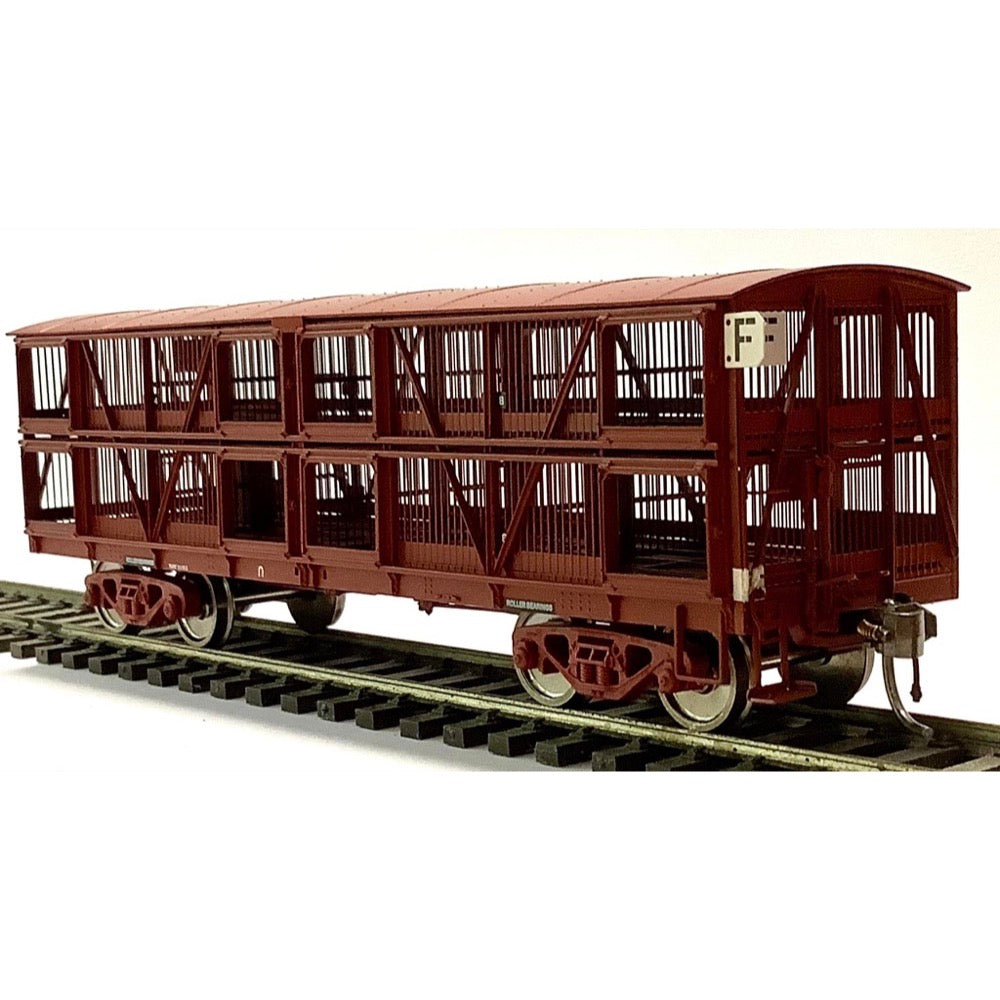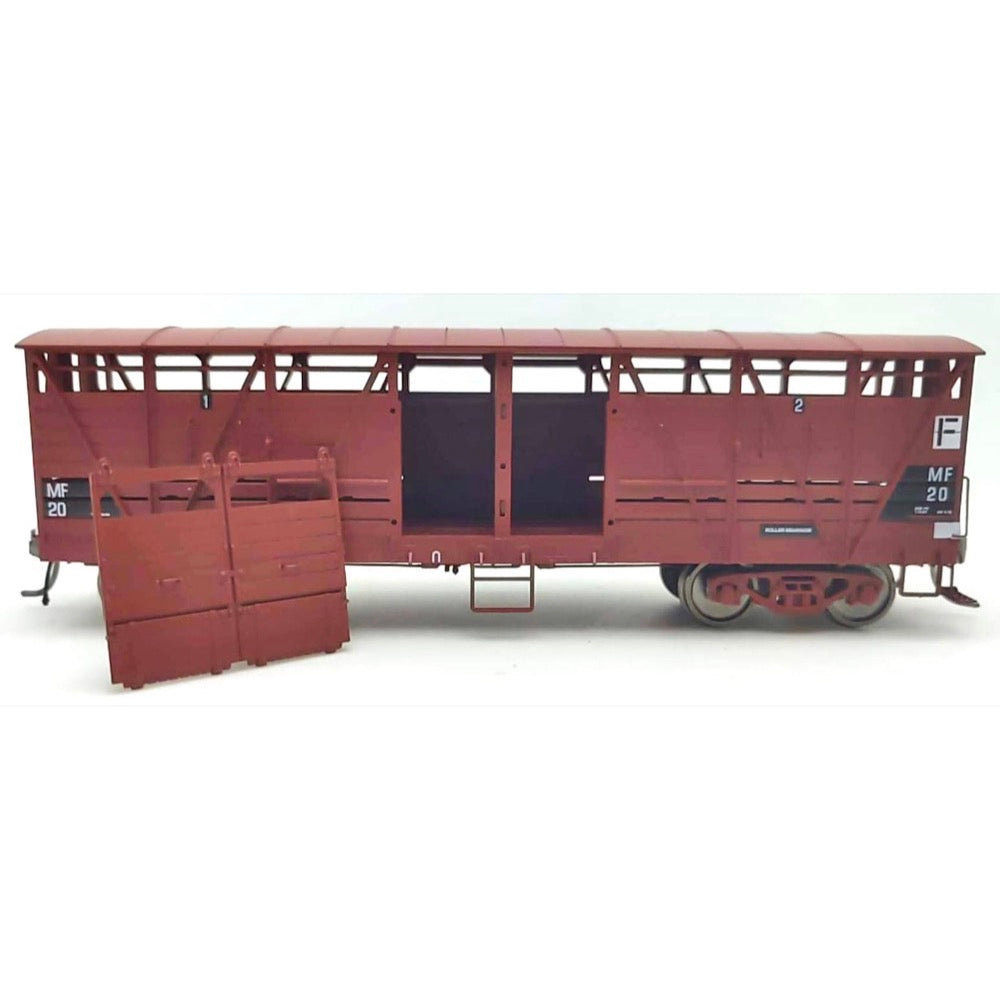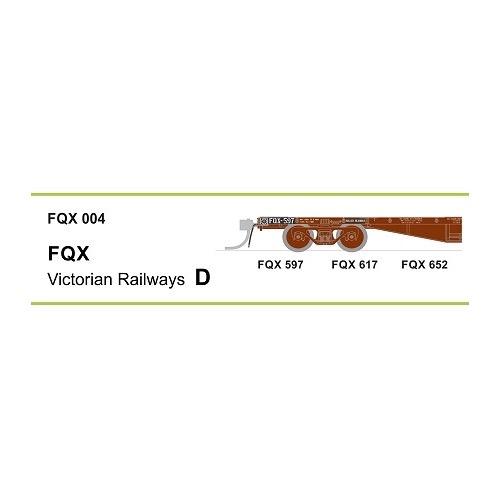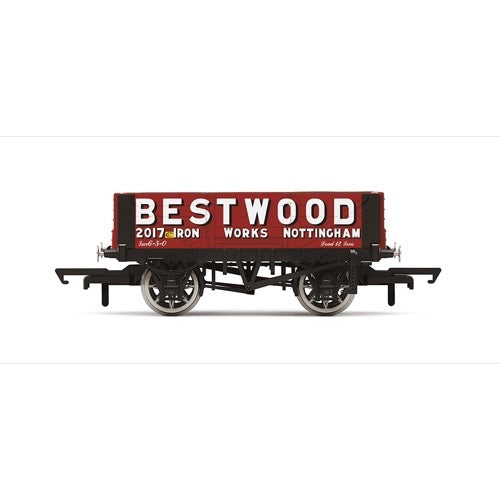
Hornby R60094 OO 4 Plank Wagon Bestwood Iron Works
19.00
$
<p>A standard design with drop sides to transport general merchandise, the 4 Plank Open Wagon is a stalwart for locomotion. Exposed, easy to load, and pleasant in its simplicity, an open wagon is a model of value to any collector with their chosen set of model railways.</p>
<h3>Specification</h3>
<ul>
<li>Item Length - Without Packaging (cm): 7.1</li>
<li>Item Height - Without Packaging (cm): 2.5</li>
<li>Item Width - Without Packaging (cm): 3.5</li>
<li>Item Weight - Without Packaging: 0.2</li>
<li>Item Scale: 1:76 Scale 00 Gauge</li>
<li>Finish: Painted</li>
<li>Colour: Red</li>
<li>Operator: Bestwood Iron Works</li>
<li>Designer: Various</li>
<li>Livery: Bestwood Red</li>
<li>Minimum Curve (mm): Radius 1</li>
<li>Number of Parts: 1</li>
</ul>
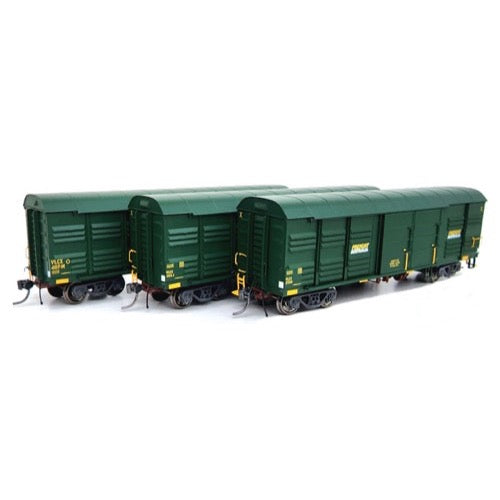
On Track Models HO VR VLCX Freight Australia pack 1 3 pack
94.00
$
<p>These were Louvre Vans built for the Victorian Railways by a combination of Bendigo North, Newport & Ballarat North Workshops between 1962 & December 1967.</p>
<p>Vans 1 - 87 and 99 - 135 were introduced as VLF's, before being recoded VLX between November 1963 & June 1965.</p>
<p>Vans 88 - 98 were also built to this pattern but were introduced as VLX's. These vans were fitted with timber floors.</p>
<p>Vans 136 - 660 were built to a slightly different design and featured steel floors. These were introduced as VLX.</p>
<p>As introduced these wagons had red roofs from new, however these were repainted silver in the late 1960's</p>
<p>During the 1979 reclassification, these wagons were recoded VLCX.</p>
<p>In 1994 some wagons were transferred to the newly formed National Rail Corporation and were recoded to RLCX before being returned to V/Line and renumbered to their old numbers.</p>
<p>And during 1994 some 20 random numbered VLCX vans were recoded to VLVX for use in Freight Centre Traffic.</p>
<p>These wagons have appeared in VR Wagon Red as originally produced with no logo, then a small, med, and large VR logo.</p>
<p>Later they received the V/Line logo carrying this through to the 80's & 90's until some were painted Freight Australia Green, then later Pacific National Blue.</p>
<p>A couple of vans made it into West Coast Railway Blue.</p>
<p>Door styles over the years changed from the original plain panel doors, to single louvre, then twin louvre, and finally VHX style doors. Combinations of the first 3 doors are common.</p>
<p>These vans include Genuine Kadee (R) Couplers, and AMRA profile wheels.</p>
<p>Features include opening sliding doors, simulated timber floors on the VLF style wagons, and a steel chequer plate floor on the VLX variant.</p>
<p>They also come with internal Cargo barriers, and a combination of either plain pattern, twin louvre doors, or VHX style doors.</p>
<p>These wagons feature the end louvre on the roof panel.</p>
<h3>Specification</h3>
<ul>
<li>Three HO Scale VLX Models</li>
<li>Style: 3 VLCX Vans with Freight Australia logos.</li>
<li>Wagon numbers: VLCX 258B, VLCX 388J, & VLCX 407M</li>
<li>Era covered: 1998 - 2008</li>
</ul>
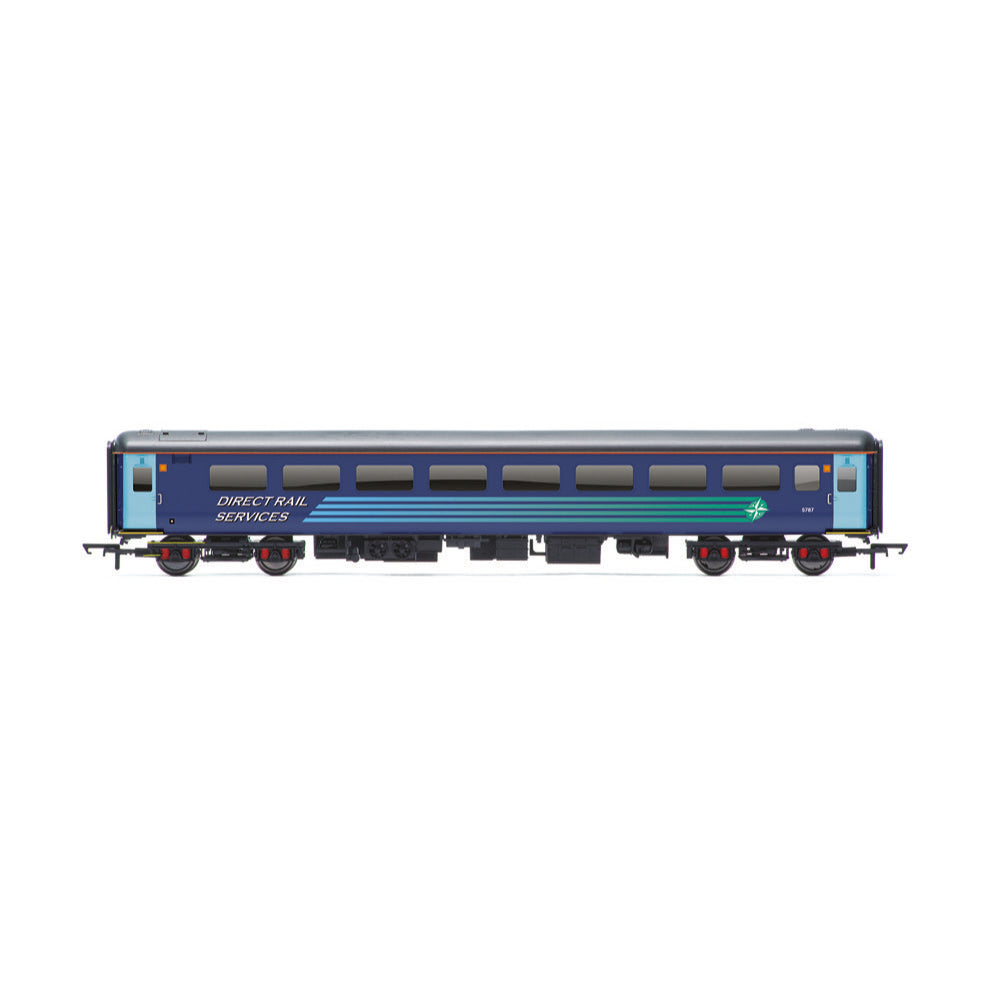
Hornby R40330 OO DRS Mk2E Standard Open 5787
37.00
$
<p>The Mk2 Coach was introduced to the British Railway in 1964, designed to be stronger and more resistant to corrosion than their predecessors yet also reducing maintenance costs. A revised painting method coincided with a switch from BR maroon and Southern Region dark green to a blue and grey livery.</p><p>1876 Mk2 Coaches were produced by BREL at Derby Litchurch Lane Works between 1963 and 1975, with many remaining in service performing departmental work and charter services. Mk2 Coaches were also widely exported and remain in mainline service in New Zealand as of 2020. Coaches and multiple units based upon the Mk2 design have also operated in Ireland, Taiwan and Kenya.</p><h3>Specifications</h3><ul>
<li>Item Length - Without Packaging (cm): 26.8</li>
<li>Item Height - Without Packaging (cm): 5</li>
<li>Item Width - Without Packaging (cm): 3.5</li>
<li>Item Weight - Without Packaging: 0.13</li>
<li>Item Scale: 1:76 Scale 00 Gauge</li>
<li>Finish: Painted</li>
<li>Colour: Blue</li>
<li>Operator: DRS</li>
<li>Designer: BR</li>
<li>Livery: DRS</li>
<li>Minimum Curve (mm): Radius 2</li>
<li>Number of Parts: 1</li>
</ul>
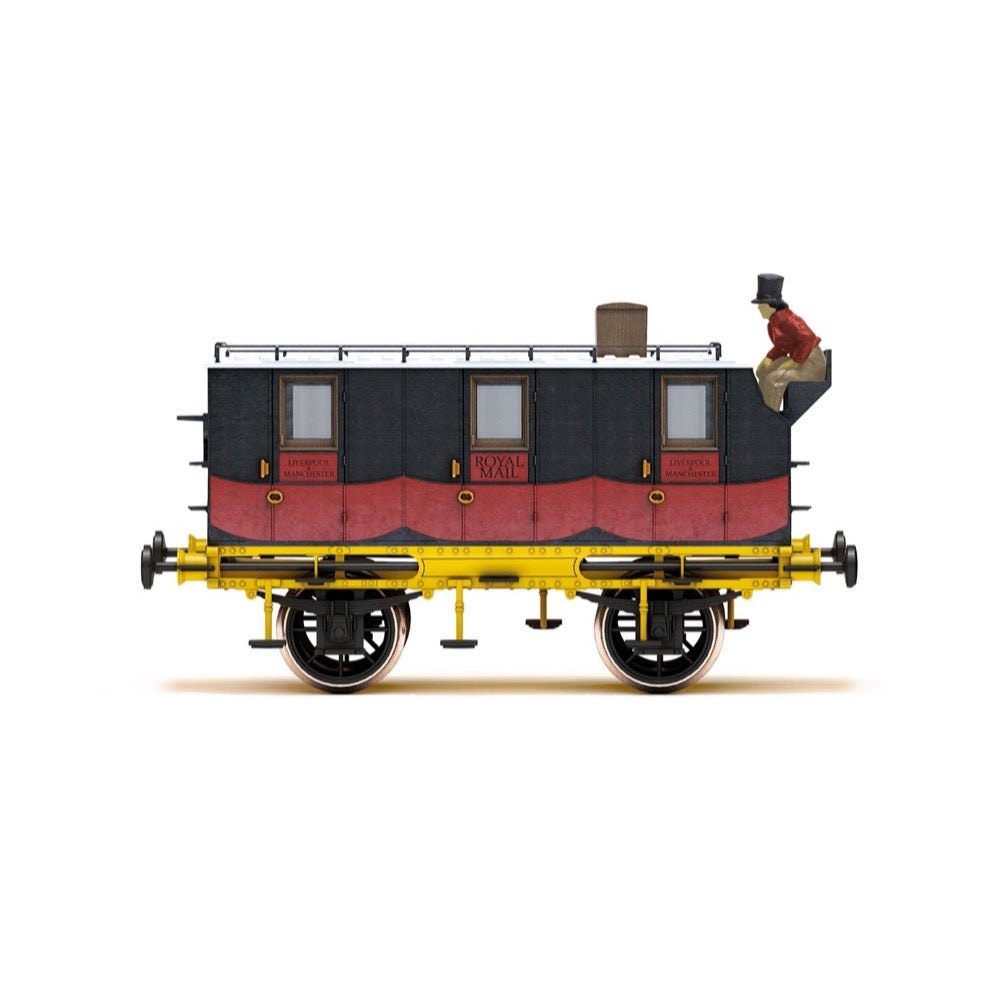
Hornby R40436 L&MR Royal Mail Coach 1804 - 1869
28.00
$
<p>Upon the opening of the Liverpool and Manchester Railway in 1830, an agreement was made to carry mail on the railway. A Royal Mail coach would be placed on the end of a train with a guard seated high up on a special seat at the back of the coach keeping a watchful eye. As the first specifically designed Mail Coach to be used on a railway, it paved the way for a long-standing relationship between railways and the mail.</p>
<p>In the style of an old horse-drawn carriage, our Royal Mail coach model emulates mail travel from the 1800s. It sports an L&MR red and black livery. A crew figure (coachman) can be seated at the back of your layout to perfectly replicate the scene. The accessory bag contains two chain couplings and a coachman figure.</p>
<h4>Include</h4>
<ul>
<li>1x Rolling Stock Coach</li>
</ul>
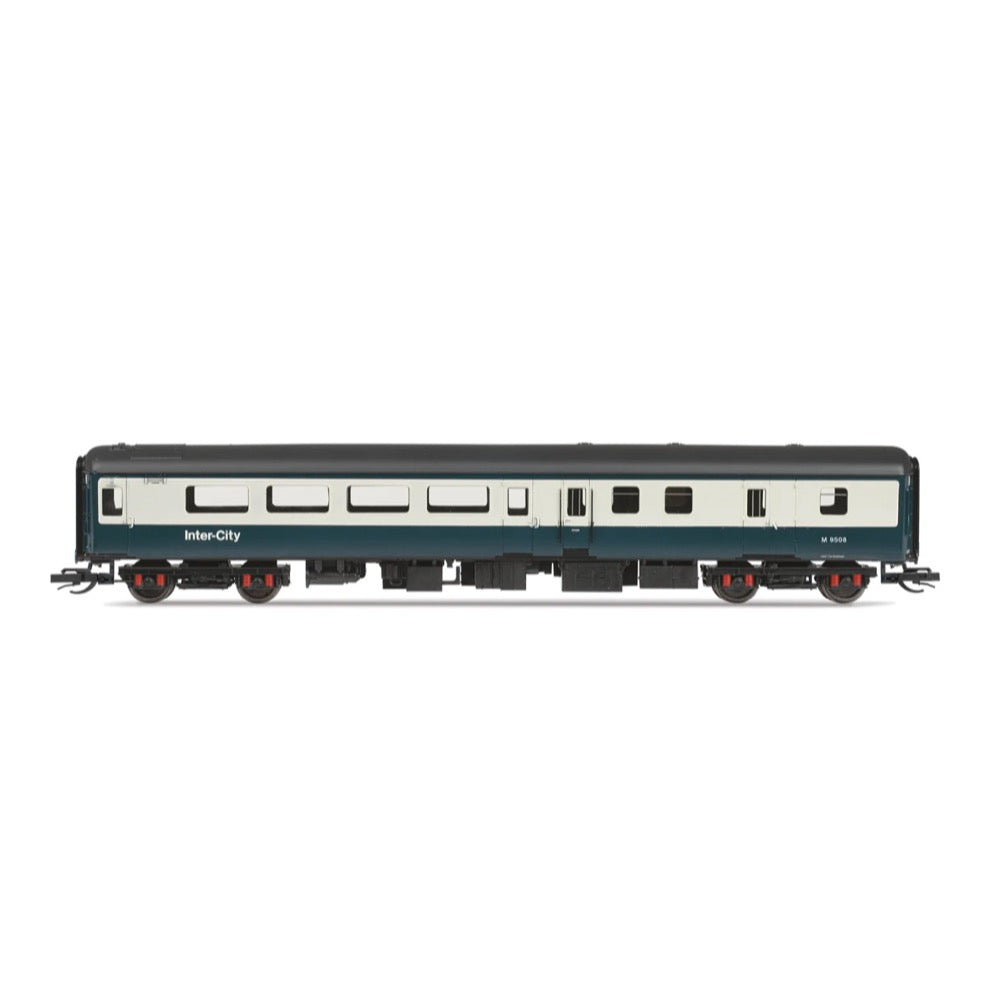
Hornby TT4013 TT BR Intercity Mk2E Brake Standard Open 9504
27.00
$
<p>The British Rail Mark 1 coaches were not suitable for higher speed rail services, with the Mark 1 coaches being a perfect compliment for steam locomotives which saw themselves being replaced by diesel and electric locomotives as the 1960s progressed. The Mark 2 coach was introduced in 1964 and was all steel. While the Mark 2 was a progression of the Mark 1, the two shared almost no common parts, and only a passing resemblance.</p><p>In service, the Mark 2 coaches were commonly seen in the BR Blue and Grey livery and Network South East colours. The coaches were mainly hauled by larger express diesel and electric locomotives such as the Class 40, 47 and 86. As of 2022, the only Mark 2 coaches still in service are those that are part of the Network rail fleet.</p><p>The Mark 2 E coaches were fitted with luggage racks opposite the toilets at the end of each coach. The toilets themselves were reduced in size from the preceding variants. The gangway doors on Mark 2 E coaches were cream folding doors of a plastic construction.</p><h3>Specifications</h3><ul>
<li>Item Length - Without Packaging (cm): 16.8</li>
<li>Item Height - Without Packaging (cm): 3</li>
<li>Item Width - Without Packaging (cm): 2.2</li>
<li>Item Weight - Without Packaging: 0.04</li>
<li>Item Scale: 1:120 Scale</li>
<li>Finish: Painted</li>
<li>Colour: Multiple</li>
<li>Gauge: TT</li>
<li>Operator: BR</li>
<li>Designer: BR</li>
<li>Livery: Intercity Executive</li>
<li>Minimum Curve (mm): Radius 1</li>
<li>Number of Parts: 1</li>
</ul>
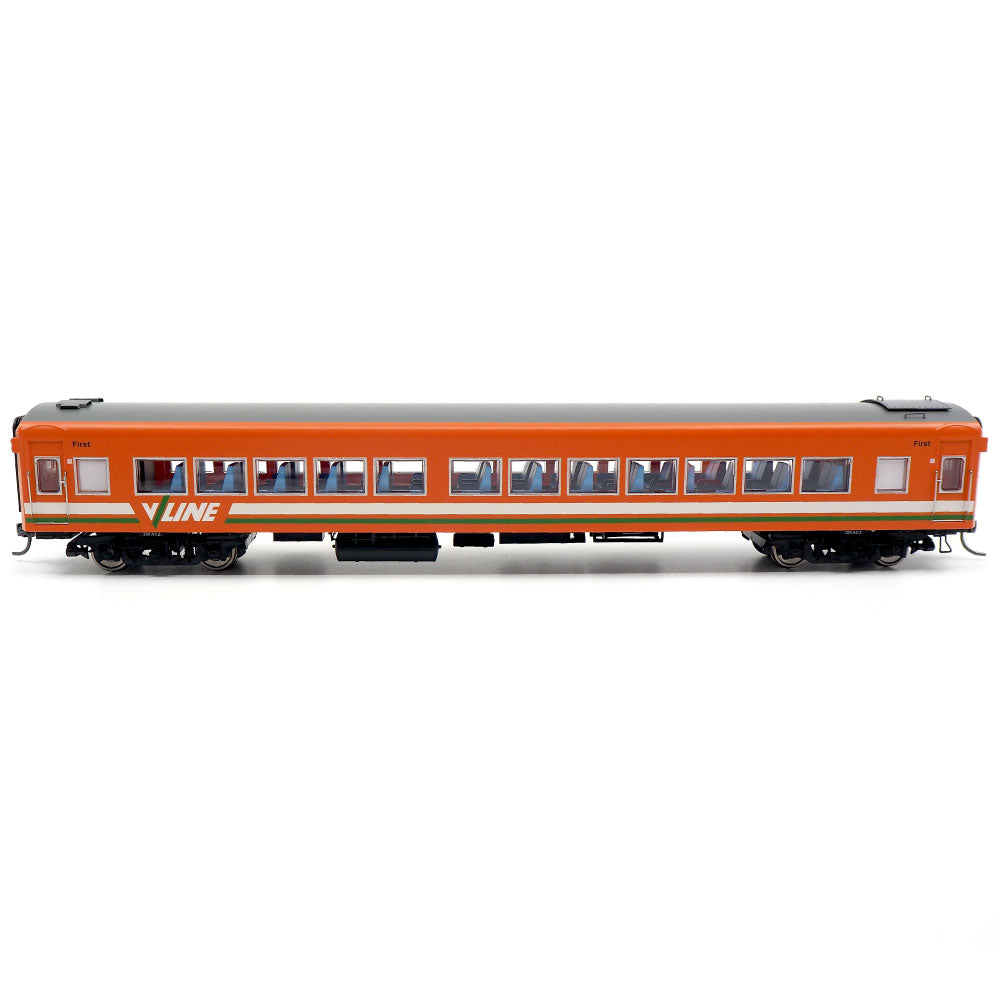
Powerline PC-540A HO ACZ 255 707 Operations Z Type Carriage
69.00
$
<h3>Powerline PC-540A HO ACZ 255 707 Operations Z Type Carriage</h3>
<p>The Z type carriages are an air conditioned steel passenger carriage used on the railways of Victoria, Australia. The carriages were constructed by the Victorian Railways from 1957 for use on intrastate services. For most of their service, the Z cars operated as Z sets, however, in the early 1990s most sets were broken up, with carriages merged into N sets. They thus currently run on mixed service with Z sets.</p>
<ul>
<li>Highly detailed</li>
<li>Plastic, resin, and etch metal components</li>
<li>HO Scale</li>
<li>Z-Type Carriage</li>
</ul>
<p><em>ACZ 259 Displayed for illustration</em></p>
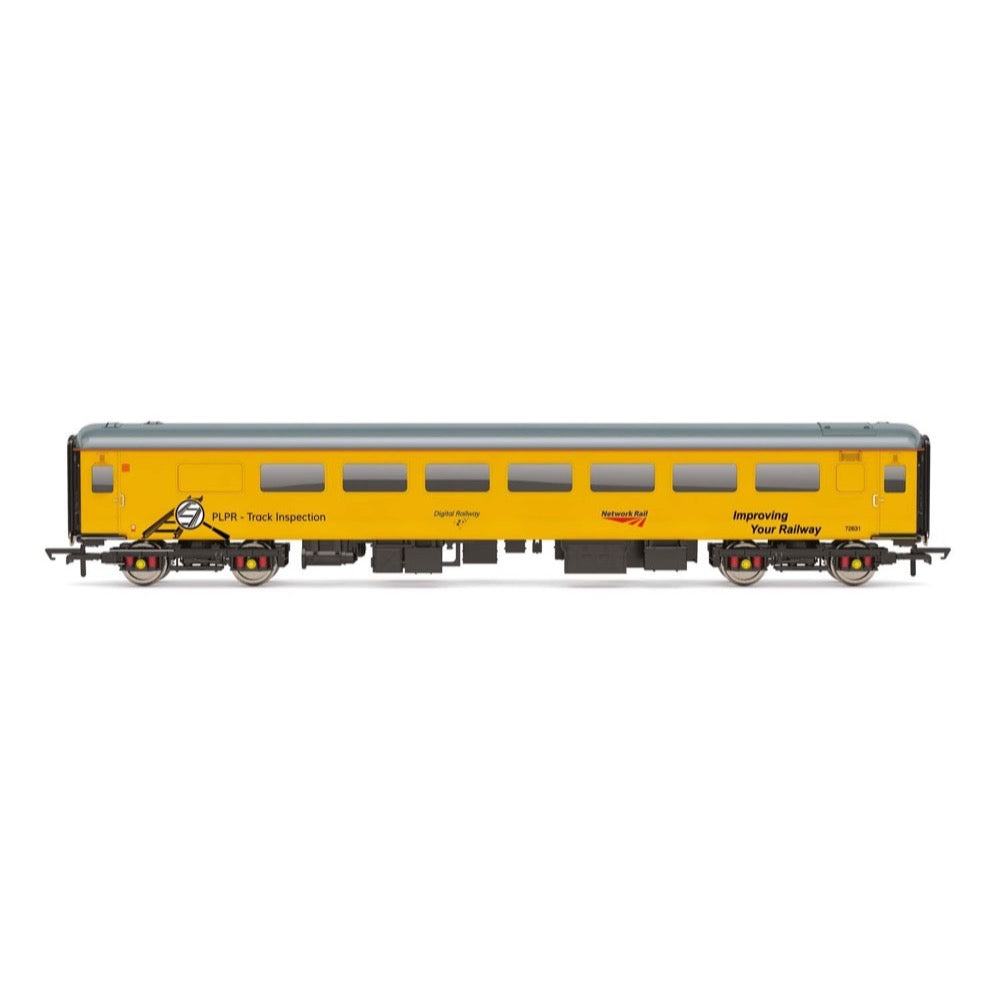
Hornby R4928 Network Rail Mk2F Plain Line Pattern Recognition Vehicle 72631 - Era 10
27.00
$
<p>Network Rail, Mk2F Plain Line Pattern Recognition Vehicle, 72631 - Era 10</p>
<h3>Specification</h3>
<ul>
<li>Item Scale: 1:76 Scale 00 Gauge</li>
<li>Gauge: OO</li>
<li>Operator: Network Rail</li>
<li>Livery: Yellow</li>
<li>Minimum Curve (mm): Radius 2</li>
<li>Coupling: NEM / Tension lock</li>
</ul>
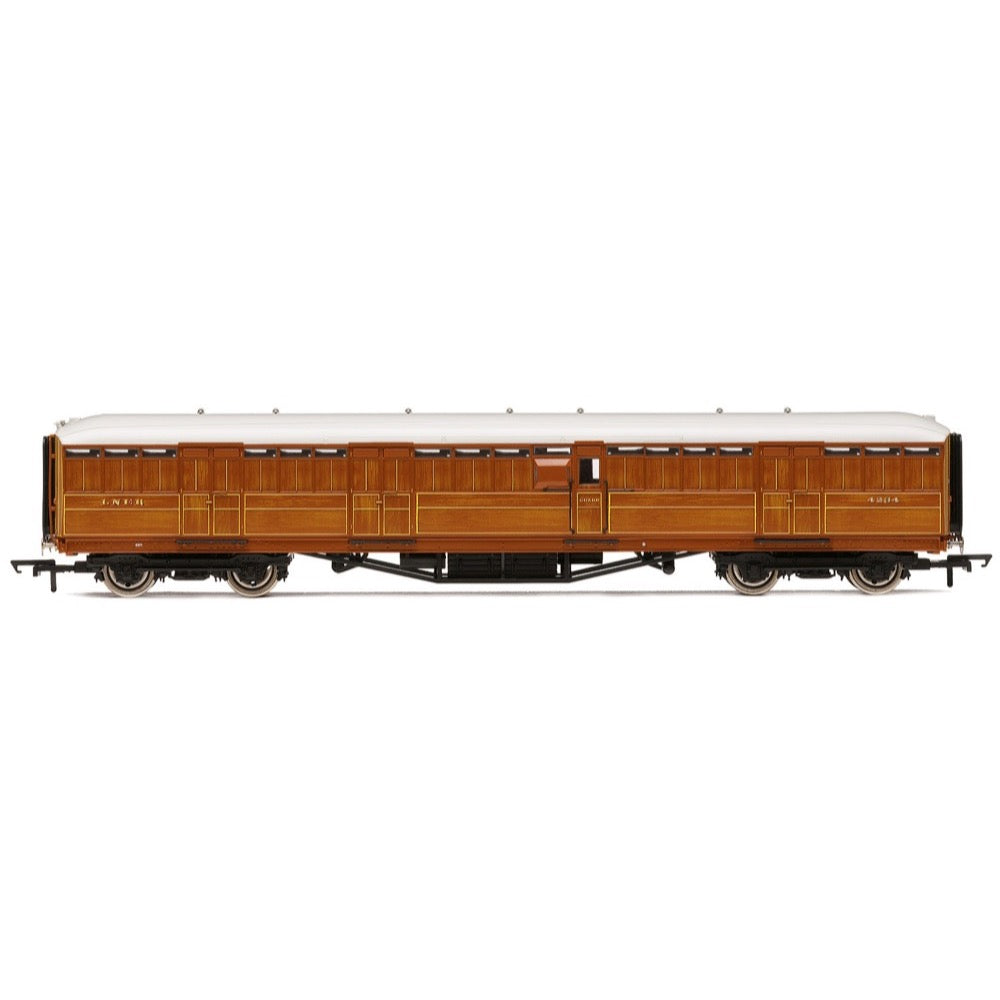
Hornby R4830 OO LNER 61 6 Gresley Full Brake 4234 Era 3
53.00
$
<p>Despite losing the crown of the largest of the 'Big Four' railway companies to its main rival the LMS, the LNER is notable for having some of the most iconic designs of locomotive and coaches ever devised. Often overlooked due to the prowess of their locomotives, the coaches of the LNER were some of the most resplendent coaches for their period, rivalled only by the privately owned Pullman Coaches.</p>
<p>With stylings rooted in the rolling stock of the large constituent GNR, many LNER coaches were made from panelled teak giving the coaches a unique appearance. Unlike other coach designs of the same era the LNER did not paint their coaches choosing instead to simply apply wax varnish to the exterior and interior wood resulting in the rich natural tones of the wood shining under any light.<br>Represented in 1:76 scale, these coaches feature fully detailed interiors, an accurate representation of the teak wood panelling and metal wheels on each bogie.</p>
<h3>Specification</h3>
<ul>
<li>Item Length - Without Packaging (cm): 24.6</li>
<li>Item Height - Without Packaging (cm): 5</li>
<li>Item Width - Without Packaging (cm): 3.5</li>
<li>Item Weight - Without Packaging: 0.15</li>
<li>Item Scale: 1:76 Scale 00 Gauge</li>
<li>License: No</li>
<li>Finish: Painted</li>
<li>Colour: Teak</li>
<li>Gauge: OO</li>
<li>Operator: LNER</li>
<li>Designer: Sir Nigel Gresley</li>
<li>Livery: LNER Teak</li>
<li>Minimum Curve (mm): Radius 2</li>
<li>Number of Parts: 1</li>
<li>Buffer Type: Sprung Metal Buffers</li>
<li>Coupling Type: NEM Tension Lock</li>
</ul>



